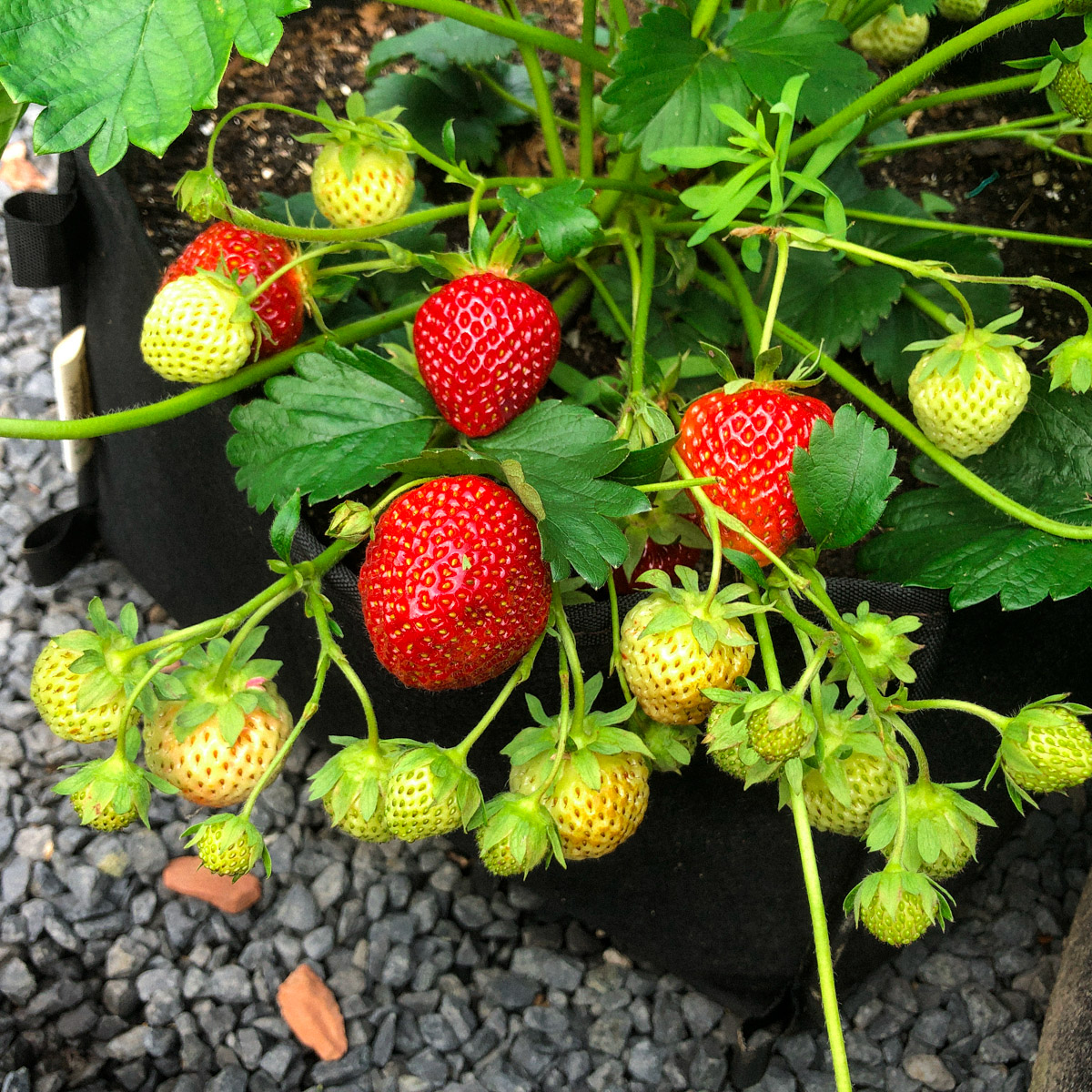- Planting and growing early potatoes
- Growing herbs in pots or garden boxes
- Strawberries in your Planty Garden
- Sow or plant chives?
- Vegetables and herbs for the bees
- Buy vegetable seedlings or not?
- Growing potatoes in a pot
- Planting potatoes in an MM-Airbak
- Raspberries in your Planty Garden
- Growing garlic
- Planting and growing early potatoes
- Growing herbs in pots or garden boxes
- Strawberries in your Planty Garden
- Sow or plant chives?
- Vegetables and herbs for the bees
- Buy vegetable seedlings or not?
- Growing potatoes in a pot
- Planting potatoes in an MM-Airbak
- Raspberries in your Planty Garden
- Growing garlic
Growing strawberries in your Planty Garden

What are strawberries?
I do too. As long as they're sweet, ripened by the sun, and - ideally - freshly picked. I'm not into those watery strawberries from the supermarket.
But what I didn't know is that strawberries belong to the rose family.
What do you need to grow strawberries yourself?
- a square patch of 30x30 cm with a light, nutritious soil mix
- a strawberry plant
- a spot with at least 6 hours of sunlight per day

Strawberries in an MM-Airbak
I just planted these strawberry plants:
More about our strawberries
That is a new, everbearing variety that meets our requirements exactly: easy to grow, resistant to diseases, and a large harvest from June to early October.
And of course super tasty, with a flavor like wild strawberries.

The best plants come from a real strawberry grower
Family: plant
Number per bed: 1
Height: 20-30 cm
Location: front and center of the bed
Planting: March to May - immediately upon receipt
Bloom: June to August
Harvest: June to early October
Sunlight: sun
Do you want to buy our strawberries? We sell them from the end of March until April.

At the end of the year, the grower takes them out of the pots and freezes them at -1°C.
In the spring, they come out of the cold storage and are sold immediately - almost always to professional strawberry growers. They want plants that will take root quickly and provide a substantial harvest after just 8-10 weeks.
How to plant and care for strawberries?
Level 1: Planting strawberries


In the first two weeks, the plants still need to get used to their new environment. Therefore, keep an eye on the weather and cover them with some fleece (or an MM cap) in case of frost at night.
Do this during the day as well when the temperature drops below 8 degrees Celsius. After two weeks, this is no longer necessary.
Level 2: Care

Level 3: Flowers

Level 4: first fruits

Protect your strawberries from birds
Level 5: summer check and removing runners

Level 6: end of the season

Level 7: Starting a new season

So, what keeps you from growing and planting strawberries?


Other plants
- Planting and growing early potatoes
- Growing herbs in pots or garden boxes
- Strawberries in your Planty Garden
- Sow or plant chives?
- Vegetables and herbs for the bees
- Buy vegetable seedlings or not?
- Growing potatoes in a pot
- Planting potatoes in an MM-Airbak
- Raspberries in your Planty Garden
- Growing garlic